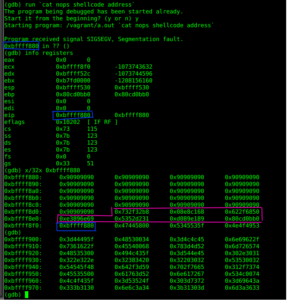Buffer Overflow Vulnerabilities: Understanding and Mitigating the Risk
Introduction
In the realm of cybersecurity, buffer overflow vulnerabilities have long been a prevalent issue. These weaknesses can lead to severe consequences, including unauthorized access to sensitive information, system crashes, and remote code execution. In this blog post, we will delve into the fundamentals of buffer overflow vulnerabilities, explore how they occur, and discuss strategies to mitigate their risks.
What is a Buffer Overflow?
A buffer overflow is a type of vulnerability that occurs when a program writes more data to a buffer than it can hold, causing the excess data to overwrite adjacent memory locations. Buffers are areas of memory allocated for storing data temporarily. When a buffer overflow takes place, it can corrupt or overwrite crucial data, leading to unpredictable behavior and potential security breaches.
The Root Cause
Buffer overflow vulnerabilities typically arise due to insufficient input validation and lack of proper memory management in a program. Common programming languages like C and C++ are especially prone to buffer overflows, as they do not include built-in mechanisms for managing memory allocation safely.
Exploiting Buffer Overflow Vulnerabilities
Attackers exploit buffer overflow vulnerabilities by crafting malicious input that overflows the target buffer, often injecting and executing malicious code. One classic example is a stack-based buffer overflow, where an attacker overwrites the return address of a function call to redirect the program’s execution flow to the malicious code.
Mitigating the Risk
To reduce the likelihood of buffer overflow vulnerabilities, developers can follow these best practices:
-
- Input Validation: Always validate user input and restrict it to the expected data type, length, and format.
- Secure Coding Practices: Use memory-safe functions and libraries that automatically manage memory allocation, such as strncpy() instead of strcpy() in C.
- Static and Dynamic Analysis: Employ automated tools to analyze code for potential vulnerabilities during development.
- Address Space Layout Randomization (ASLR): This technique randomizes the memory addresses of key data structures, making it harder for attackers to predict target addresses.
- Use modern programming languages: Languages like Python, Java, and Rust are designed with built-in memory management features that help prevent buffer overflows.
Conclusion
Buffer overflow vulnerabilities have been a longstanding concern in the field of information security. By understanding their root causes and employing secure coding practices, developers can significantly reduce the risk of these vulnerabilities. Additionally, organizations should invest in security training and automated analysis tools to ensure a proactive approach to maintaining a robust and secure software ecosystem.

